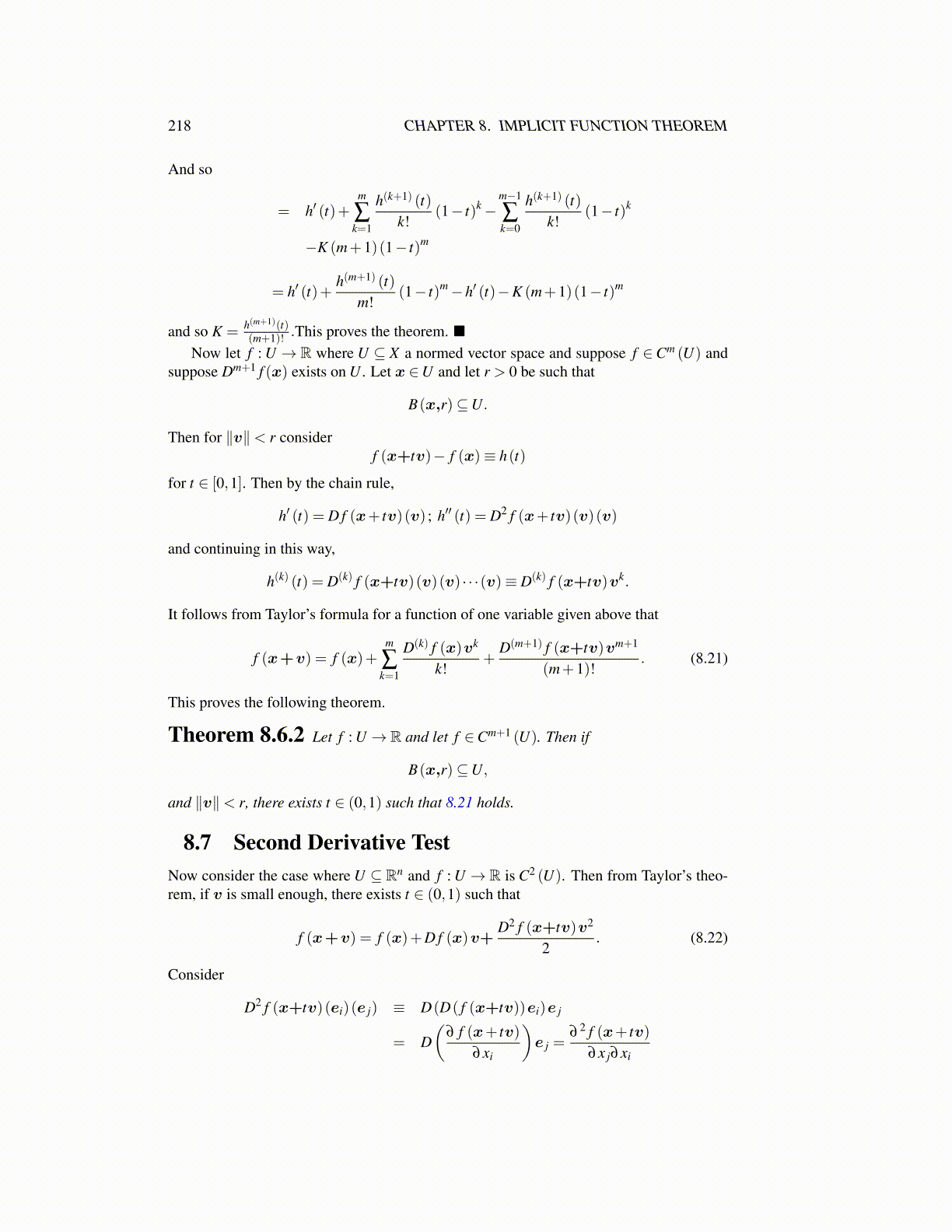
218 CHAPTER 8. IMPLICIT FUNCTION THEOREM
And so
= h′ (t)+m
∑k=1
h(k+1) (t)k!
(1− t)k−m−1
∑k=0
h(k+1) (t)k!
(1− t)k
−K (m+1)(1− t)m
= h′ (t)+h(m+1) (t)
m!(1− t)m−h′ (t)−K (m+1)(1− t)m
and so K = h(m+1)(t)(m+1)! .This proves the theorem. ■
Now let f : U → R where U ⊆ X a normed vector space and suppose f ∈Cm (U) andsuppose Dm+1 f (x) exists on U . Let x ∈U and let r > 0 be such that
B(x,r)⊆U.
Then for ∥v∥< r considerf (x+tv)− f (x)≡ h(t)
for t ∈ [0,1]. Then by the chain rule,
h′ (t) = D f (x+ tv)(v) ; h′′ (t) = D2 f (x+ tv)(v)(v)
and continuing in this way,
h(k) (t) = D(k) f (x+tv)(v)(v) · · ·(v)≡ D(k) f (x+tv)vk.
It follows from Taylor’s formula for a function of one variable given above that
f (x+v) = f (x)+m
∑k=1
D(k) f (x)vk
k!+
D(m+1) f (x+tv)vm+1
(m+1)!. (8.21)
This proves the following theorem.
Theorem 8.6.2 Let f : U → R and let f ∈Cm+1 (U). Then if
B(x,r)⊆U,
and ∥v∥< r, there exists t ∈ (0,1) such that 8.21 holds.
8.7 Second Derivative TestNow consider the case where U ⊆ Rn and f : U → R is C2 (U). Then from Taylor’s theo-rem, if v is small enough, there exists t ∈ (0,1) such that
f (x+v) = f (x)+D f (x)v+D2 f (x+tv)v2
2. (8.22)
Consider
D2 f (x+tv)(ei)(e j) ≡ D(D( f (x+tv))ei)e j
= D(
∂ f (x+ tv)∂xi
)e j =
∂ 2 f (x+ tv)∂x j∂xi